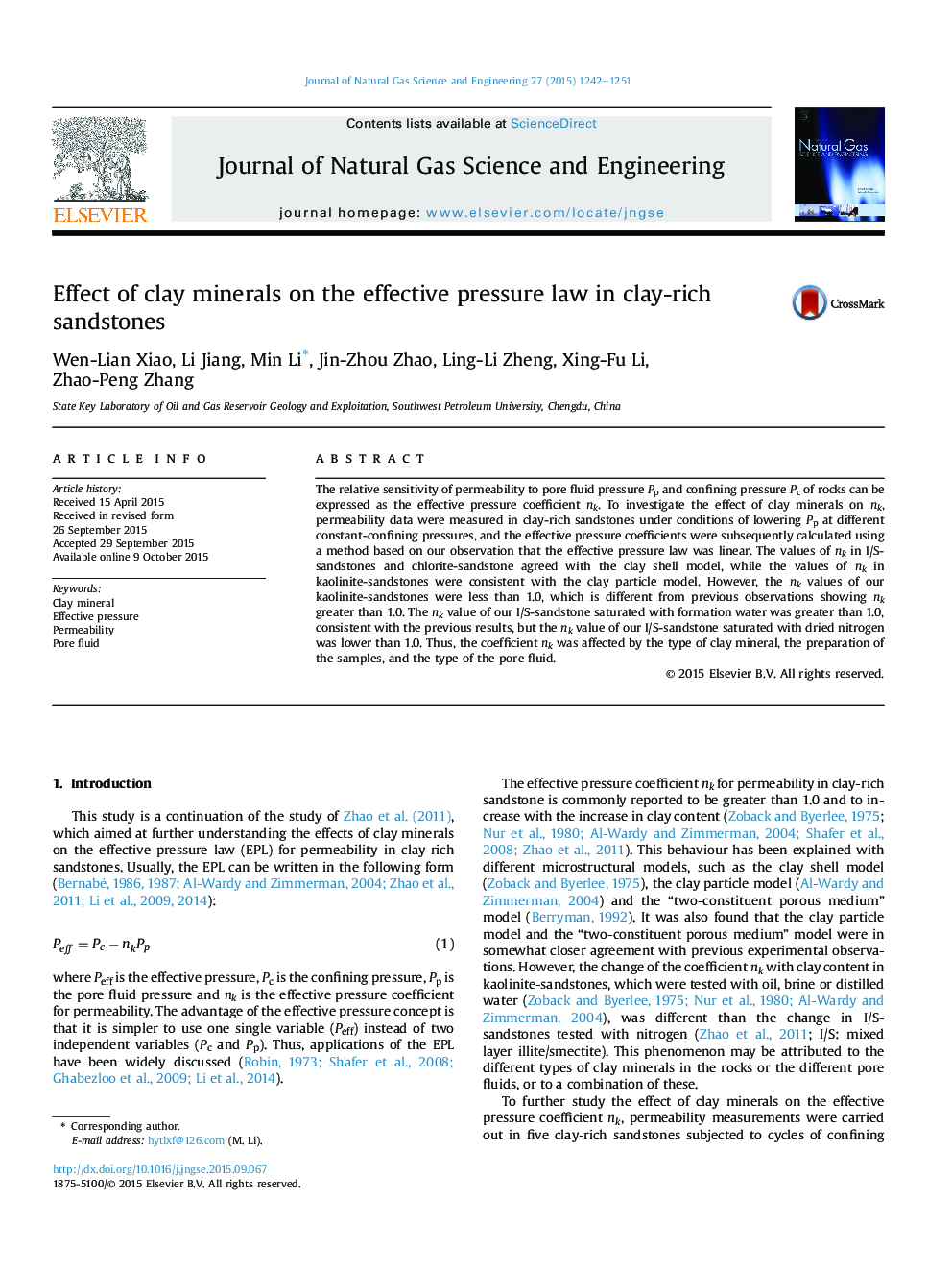| Article ID | Journal | Published Year | Pages | File Type |
|---|---|---|---|---|
| 1757672 | Journal of Natural Gas Science and Engineering | 2015 | 10 Pages |
•A simplified method for determining linear EPLs for permeability.•The clay particle model and the clay shell model can be used to characterize clay-sandstones.•Terzaghi' effective pressure can't be used to evaluate the pressure sensitivity of permeability in our sandstones.•The clay minerals themselves are not the dominating factor for the effective pressure law in clay-rich sandstones.
The relative sensitivity of permeability to pore fluid pressure Pp and confining pressure Pc of rocks can be expressed as the effective pressure coefficient nk. To investigate the effect of clay minerals on nk, permeability data were measured in clay-rich sandstones under conditions of lowering Pp at different constant-confining pressures, and the effective pressure coefficients were subsequently calculated using a method based on our observation that the effective pressure law was linear. The values of nk in I/S-sandstones and chlorite-sandstone agreed with the clay shell model, while the values of nk in kaolinite-sandstones were consistent with the clay particle model. However, the nk values of our kaolinite-sandstones were less than 1.0, which is different from previous observations showing nk greater than 1.0. The nk value of our I/S-sandstone saturated with formation water was greater than 1.0, consistent with the previous results, but the nk value of our I/S-sandstone saturated with dried nitrogen was lower than 1.0. Thus, the coefficient nk was affected by the type of clay mineral, the preparation of the samples, and the type of the pore fluid.
